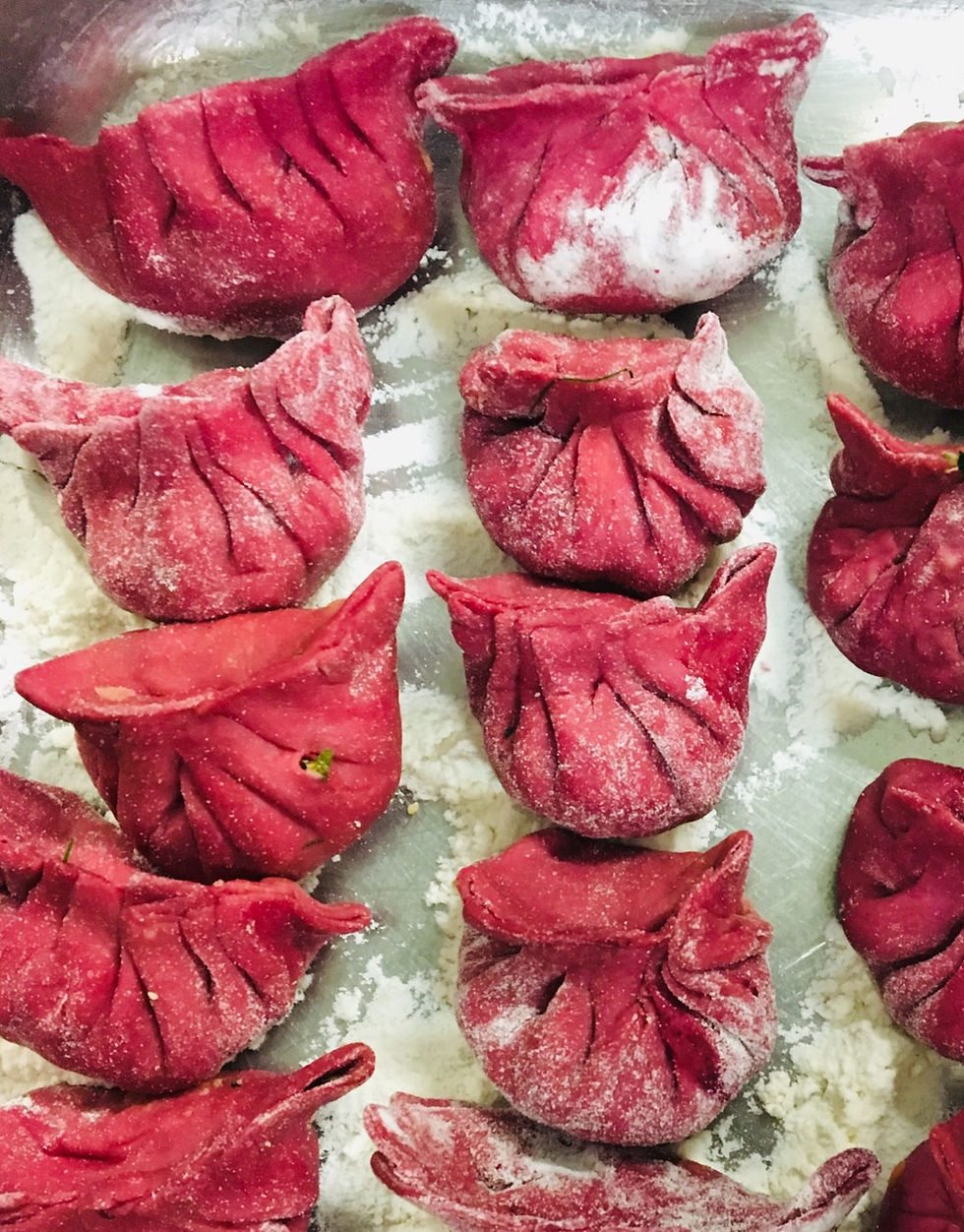Not just any flour to make smooth dumplings!
- bomspringlondon
- Oct 14, 2021
- 2 min read

Unlike common beliefs, it is not necessary to buy Chinese flour to make Chinese dumplings or bao buns. The white flour that is inside those packets is highly processed and bleached to achieve this whiteness. When I teach dumplings (Bao Zi and Gyoza), I use standard UK flour as I am based here and French flour when I visit my family in France. However you should also not use any flour to make them. In this post, I am explaining why choosing the right flour will make the difference.
Every country seems to classify flours differently. In France, we use the fiber content to classify flours from type 45 for cake flour to type 150 for wholewheat. This number refers to the ash content for 10g of flour. But in the UK it's a totally different system, no numbered standardized flour types are defined, and the ash mass is only rarely given on the label by flour manufacturers.

If you want to make dumplings, what flour should you choose regardless of where you are?
What's important is the protein content (also being the gluten content). The legally required standard nutrition label always specifies the protein content of the flour so you should identify that information on the side or back of the packet.
As per Wei from Red House Spice, to achieve a good texture for dumpling, a medium protein or gluten content flour would be suitable:
10-11g = ideal for dumplings
12-14g = more resilient
under 10g = soft
But if I wanted to make a fluffy bao I may want to choose a higher protein (or gluten) content because I want to achieve an elastic dough which would retain better the carbone dioxyde gas from the fermentation process. I would go for the 12g protein content.

Once you find the right flour, how much water should you add to achieve a good texture. I would go for a simple ratio of 1/2 water for 1 flour. It's simple to remember and great for results as well.
You can replace the water by water spinach, carrot juice or even beetroot for a nice colour.
If you want to learn how to make plant-based dumplings, why not joining one of our classes? Visit our Booking page regularly or send us a message if you want a bespoke and private class.





Comments